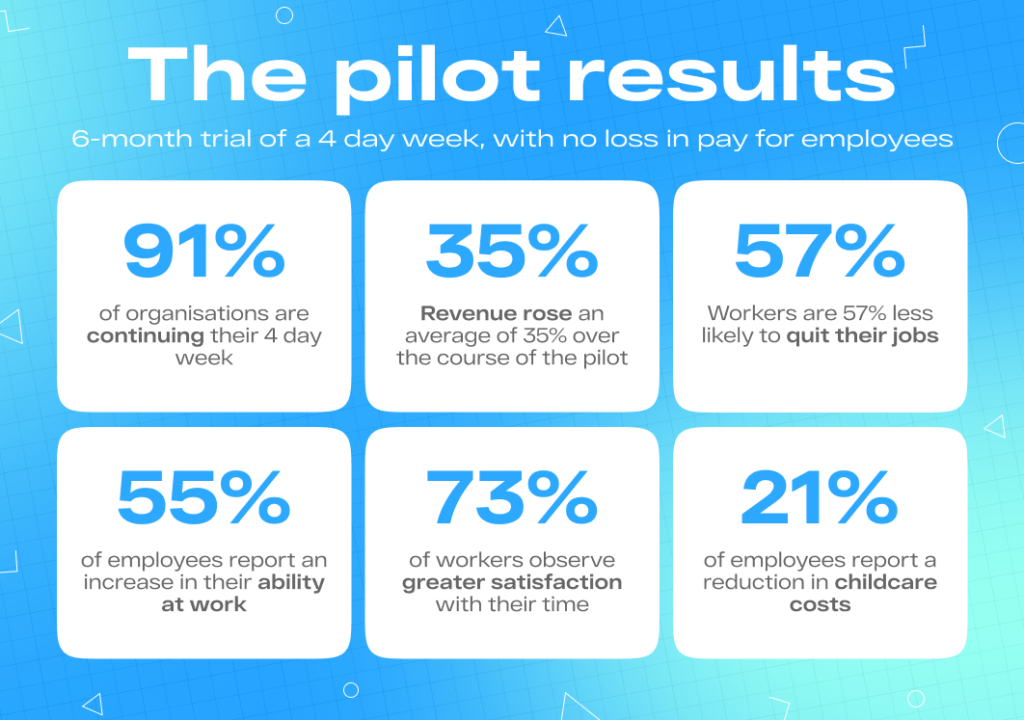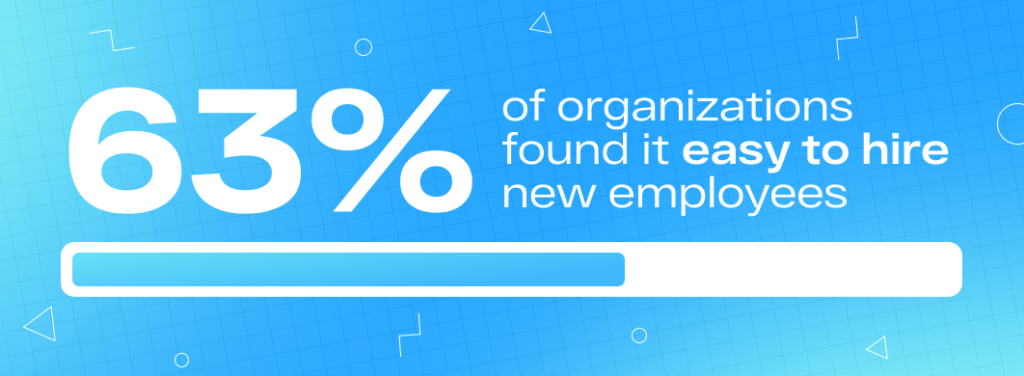
Have you heard the news going around at work? Let’s chat by the water cooler. There might indeed be a change coming where we only work for four days instead of five. The TUC wants the government to support this idea so that we can work fewer hours but still get paid the same amount.
You might be wondering how it’s possible to have a shorter work week. Why would employers agree to it? Wouldn’t it harm the company? The answer is because of new robots that can help out. With new technology, workers can finish their tasks faster, so the company won’t lose out, and customers will still be helped.
AI technology will change every industry worldwide, including when and how we work. Soon, we might be able to work from home more often and have more flexible schedules, like only working four days a week. A group called TUC believes this could happen within the next 100 years if companies share the advantages of new technology with their workers.
Perpetual Guardian in New Zealand already sees the sound effects of having their employees work only four days a week. This change has made their workers happier, more committed to the company, and better at working together. It has also helped to lower their stress levels. Plus, the company hasn’t seen a decrease in productivity or output by making this change.
Come and see with Seterx the advantages and disadvantages of having a four-day working week.
What is a 4-Day Work Week?

You might know someone who works long hours four days a week. It is called compressed hours. But a four-day work week means working fewer, around 28 hours, four days a week. So, the employee gets a three-day weekend.
Working only four days a week might seem strange, but we’ve been slowly reducing the work hours each week for a long time.
Back in 1890, people who worked in factories worked about 100 hours per week. But by the middle of the 20th century, that number had dropped to 40 hours per week. So, if we were to work only 28 hours per week now, it wouldn’t be such a significant change.
Top Benefits of a 4-Day Working Week

A four-day working week is a new way of working that some companies are trying out. It came about because of new technology. The results so far are suitable for both the workers and the companies.
Increased Productivity
A study by Stanford University looked at how being overworked affects how much work people get done. The study found that people who work too much get less done than people who work an average amount.
A company from New Zealand called Perpetual Guardian tried out a new work schedule where employees worked only four days a week. The study found that even though employees worked less, they were just as productive as before. They also felt happier, worked better together, and had a better balance between their work and personal lives. The employees were also less stressed, which is good for their health.
It’s not surprising that the study found working fewer hours can still be productive. Countries like Denmark, Norway, Netherlands, and Germany are very effective, and they work around twenty-seven hours per week, the same as the proposed UK four-day work week. However, Japan, where employees work a lot, is only ranked 20th out of thirty-five countries for productivity.
An Equal Workplace
According to the Government Equalities Office, about two million people in Britain cannot work because they have to care for their children. And, out of these two million people, 89% are women. If we had a four-day work week, it would make the workplace fairer because workers could spend more time with their families and manage their work and family responsibilities better.
Better Employee Engagement
Working only four days a week can make employees happier & more dedicated to their job. They won’t feel as stressed or need to take as much time off because they have more time to relax and recharge. It means they return to work feeling refreshed and ready to tackle new tasks.
In Sweden, between 2015 and 2017, there was a test to see if people could work fewer hours each week. Nurses who worked at a care home worked for 6 hours each day, but they still worked for five days each week. The results were mostly good! The nurses were not sick as often, felt physically and mentally better, and were more interested in their jobs. They even had more time to do activities with the patients they cared for – 85% more than before!
A Smaller Carbon Footprint
If people work less, for example, from 5 days to four days a week, it can help the environment because countries, where people operate fewer hours, have a minor impact on the planet. By working less, people won’t have to travel to work as much, and significant office buildings will only be used four days a week instead of five, which can save energy and resources.
The US state of Utah conducted a trial for its government employees, demonstrating a significant ecological impact. The trial involved reducing the average workweek from 5 to 4 days using a compressed work schedule. Over the first ten months, the project resulted in savings of more than US$1.8 million (£1.36 million) in energy budgets. Furthermore, by closing the large office building on Fridays, there was a reduction of 6,000 metric tons of Co2 emissions. Utah has estimated that by reducing the workweek by one day, including employees’ commutes, it could potentially save 12 thousand metric tons of carbon dioxide. This reduction means removing approximately 2,300 cars from the road for a year.
Improve mental health and avoid burnout
A comprehensive four-day workweek program can enhance employees’ mental health & workplace efficiency, thereby preventing burnout among the workforce.
In recent years, many employees & companies have been affected by burnout, which can cause employees to feel very tired, lose trust in their work, be less productive, and want to leave their job.
The World Health Organization now describes burnout as an “occupational phenomenon” & a “syndrome” caused by long-term stress at work that hasn’t been adequately dealt with.
If not correctly addressed, burnout can become a long-term health problem that affects not only workers’ personal lives but also the workplace in a negative way.
The good news is that there are several ways to deal with burnout. Some of the recommended methods include developing leadership skills, giving employees a say in their job roles, and providing resources to help them perform their job duties efficiently.
Studies have found that reducing the number of workdays or work hours can significantly reduce employee burnout and better work life balance.
More time for childcare and caretaking
By reducing their working hours, employees can have more time to spend with their families and take care of their household responsibilities, such as their children or other family members.
The Icelandic study showed that employees were able to spend more time with their children as a result of the reduced work hours. Workers could pick up their children earlier from preschool or spend time with them after school. Single parents, in particular, found it easy to get themselves and their children ready for school.
Bonus day for errands and appointments
Rather than taking an hour off work that often ends up taking much longer to run errands or visit the doctor, employees can schedule these tasks for their days off.
A weekday off can also be beneficial because it allows individuals to run errands during the day when fewer people are out and about. After all, they are at work.
If you don’t need to go to the grocery store right after work, it can be more fun. Also, getting a haircut on your day off can feel like a special treat instead of just another thing to do when you’re busy.
Attracting new talent

Considering the advantages, it’s not surprising that job seekers find a four-day week attractive.
As many organizations now offer remote/hybrid work arrangements, job seekers seek more ways to balance their work and personal lives and have flexible schedules.
A group called 4 Day Week Global helps companies try out a four-day workweek. They found that 63 percent of organizations found it easy to hire new employees when they give a four-day week.
Reduced overhead costs
Companies that tried a four-day week saved a lot of money by closing their office for an additional day each week.
Microsoft Japan decided to give their workers Fridays off, reducing their energy consumption by over 20% compared to the previous year. They printed almost 60% fewer pages than before, which saved paper and helped the environment.
Challenges And How To Maintain Productivity With A 4-Day Working Week?
A lot of the studies & articles discussing four-day work weeks make it look like the benefits are too good to be true.
Until now, we have emphasized how working fewer days a week can enhance productivity, improve work-life balance, reduce stress, minimize sick time & prevent burnout.
However, the truth is that businesses that have effectively introduced a 4-day work week or reduced working hours not only work fewer hours but also perform more efficiently.
Running a four-day week trial requires critically evaluating your organizational structure and some good old-fashioned planning.
One of the primary issues associated with implementing four-day weeks revolves around the question of
- Ensuring sustained productivity levels.
- Mitigating stress caused by attempting to complete the same work in a shorter time frame.
- Ensuring appropriate coverage for outages, customer support, and other related areas.
In the following section, we will outline the strategies we have implemented to address the concerns associated with a 4-day work week and explain how we have structured our approach to ensure the success of our Summer Fridays experiment.

It’s important to note that a 4-day work week, or any short work week, may not have the same implications or connotations for every organization.
Companies take various approaches to implement a shortened work week. For instance, some organizations adopt the “4 10’s” model, which involves compressing a forty-hour work into four days. Alternatively, some companies maintain a traditional five-day work week with reduced daily working hours.
Streak has opted to adopt a four-day week by observing Fridays as non-working days, and we are prioritizing productivity & outcomes in our approach.
We are following the 100-80-100 model. It entails completing all work tasks 80 percent of the time while still receiving 100% of our regular pay. This approach enables us to maintain productivity while enjoying the benefits of a shortened work week.
How is this possible?
Initially, we never monitored the precise number of hours our staff spent sitting at the desks. Instead, we placed our trust in our employees to strive towards accomplishing their targets and objectives within five workdays. Presently, we are implementing this approach in just four workdays.
To maintain productivity during the 4-day work week, we intend to enhance time management skills.
- Improve time management & prioritization
According to Parkinson’s Law, the amount of work undertaken will expand to fit the time allotted for the completion.
Most of us have firsthand experience with Parkinson’s Law, whether procrastinating until the last minute and still managing to complete a task. By adopting a shorter work week, we are utilizing Parkinson’s Law to our advantage.
Admittedly, this may necessitate more effort and working more diligently during the four workdays, as evidenced by the accompanying graph. Nevertheless, we believe that the potential benefits make it a worthwhile trade-off.
One approach we can employ to achieve this is by setting realistic daily & weekly targets and consistently prioritizing the work. It is to ensure we progress towards those objectives.
- Measure outcomes, not volume
We have never monitored the exact duration that our staff spends sitting at the desks or working on the computers. We have no intention of implementing such monitoring. Instead, we rely on establishing precise and measurable objectives, prioritizing outcomes as our gauge of accomplishment.
The initial phase in embracing an outcome-focused approach entails defining the outcomes you wish to achieve. Establishing measurable targets for each group and individual enables you to determine if you are progressing toward those objectives.
The capacity to measure progress toward objectives during a four-day workweek eliminates the uncertainty surrounding productivity. It provides insight into whether your team can accomplish their tasks in fewer days.
Once you commence monitoring outcomes, it is crucial to commemorate your successes. Whether you operate a four-day week or not, to acknowledge exceptional performance and sustain employee enthusiasm and involvement. Additionally, schedule routine check-ins to enable you to adjust your course in case of missteps.
Frequently Asked Questions
What is the advantage of shorter working hours a week?
The major benefit is that it increases productivity. An individual learns to prioritize tasks and become more efficient.
What is the feeling about a 4-day working week?
If you do well in your 4-day working week, then it will lead to many positive changes like
- Better work-life balance
- Workplace diversity
- Heightened employee satisfaction and many more.
Wrap Up
When executed appropriately, a four-day workweek can revolutionize an organization’s internal, better work life balance and external operations. However, it may not be suitable for everyone, nor is it a universal solution for all businesses or industries. Each enterprise is distinct and the team’s willingness to adjust to make the four-day workweek effective for their organization.






